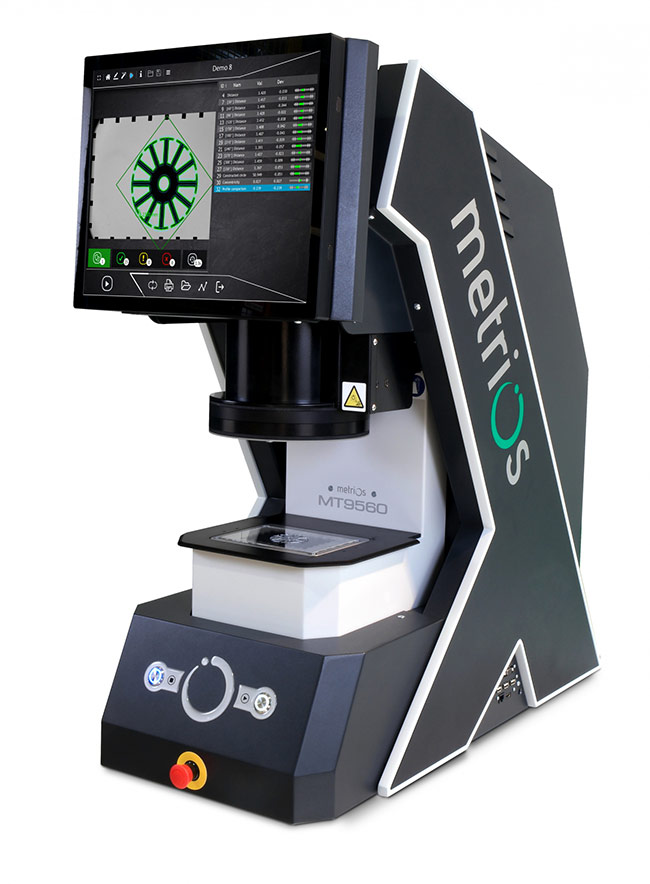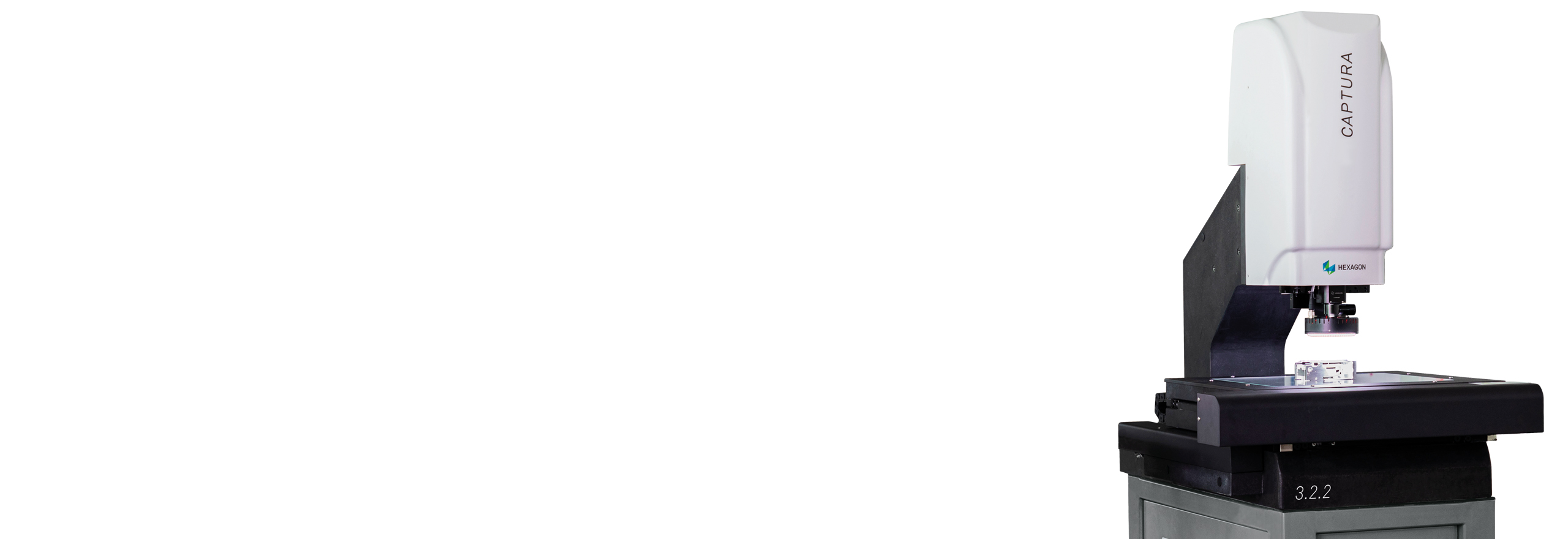Understanding how optical measurement systems enable real-time defect detection
Wiki Article
The Function of Optical Dimension Solutions in Advancing Assessment Techniques
Optical dimension systems have actually changed width, bringing a degree of precision that was when unimaginable. As you discover additionally, you'll discover just how these systems are forming the future of measurement and top quality control.The Development of Width: A Historical Perspective
As you discover the history of assessment, you'll locate that its advancement shows mankind's quest for precision and standardization. From ancient civilizations making use of body components as units of dimension to the growth of standardized weights and procedures, each action shows our wish for accuracy. The Egyptians built the pyramids making use of accurate dimensions, while the Romans progressed engineering with their advanced measuring devices.During the Renaissance, scientific innovations shifted the emphasis toward much more empirical techniques, paving the means for modern assessment. The introduction of the statistics system in the late 18th century marked a considerable landmark, establishing global criteria. Throughout the 20th century, technical advancements better transformed assessment, allowing extremely exact measurements in different fields.
Today, assessment remains to advance, integrating digital technology and automation. This history highlights not just the importance of measurement however likewise our relentless pursuit of enhancing precision and uniformity in our increasingly complicated world.
Principles of Optical Measurement Systems
Comprehending the principles behind optical measurement systems is vital for precise lead to assessment. You'll intend to take right into account essential optical principles, dimension accuracy factors, and effective system calibration strategies. Each of these components plays a vital role in guaranteeing your measurements are specific and trustworthy.Fundamental Optical Concepts
While checking out optical measurement systems, you'll experience basic optical principles that develop the backbone of precise information purchase. Light behaves in predictable methods, and comprehending these actions-- like representation, refraction, and diffraction-- is essential for reliable measurements. By grasping these principles, you'll be geared up to utilize optical innovations efficiently, leading the way for advancements in width and guaranteeing your measurements are both repeatable and trusted.Dimension Precision Factors
To achieve high dimension accuracy in optical systems, several aspects come right into play, influencing the reliability of your outcomes. High-grade lenses and detectors lower aberrations and sound, ensuring your dimensions are exact. By addressing these variables, you can improve the overall efficiency of your optical dimension systems, leading to even more reputable and exact outcomes in your metrology applications.System Calibration Techniques
Accomplishing high measurement accuracy is only component of the equation; appropriate system calibration methods are similarly crucial in optical measurement systems. Next off, employ known measurements to validate the system's outcome and make required improvements. With these strategies, you'll boost the dependability of your optical measurement system.
Secret Technologies Behind Optical Measurement
Optical dimension systems count on a number of key technologies that boost accuracy and efficiency in assessment. One necessary innovation is interferometry, which uses the disturbance of light waves to determine little displacements and surface abnormalities with extreme accuracy. You'll additionally discover laser scanning systems, which capture thorough 3D data of objects promptly, making them very useful for dimensional analysis.Additionally, CCD and CMOS sensors play a considerable duty in transforming light right into electrical signals, permitting for high-resolution imaging and exact measurements. Advanced formulas for image processing better improve dimension accuracy by evaluating information in genuine time, removing noise and boosting attributes.
Lastly, optical fiber give adaptability and the ability to measure in tough atmospheres while keeping signal integrity. By leveraging these modern technologies, you can attain superior lead to your metrology jobs, ensuring that your dimensions are both precise and trusted.
Applications of Optical Measurement in Market
As sectors increasingly demand accuracy and effectiveness, the applications of optical dimension systems have become crucial throughout different fields. In manufacturing, these systems assist you keep an eye on dimensions and tolerances in real-time, making sure top quality control without time-consuming hands-on checks. In the automotive industry, optical measurements help in lining up elements with precision, enhancing security and performance.In electronics, you're using optical techniques to examine minute functions on motherboard, discovering flaws that might bring about failures. The aerospace field gain from non-destructive screening methods, enabling you to analyze products and elements without jeopardizing their stability.
Optical dimension also plays an essential function in textiles, making certain material dimensions meet exact specifications. optical measurement system. With their capability to provide high-resolution data rapidly, these systems empower you to make informed choices, improve procedures, and eventually drive development across your market
Enhancing Accuracy and Efficiency in Dimensions
When you consider enhancing accuracy in dimensions, accuracy in your measurement techniques is important. By streamlining these procedures, you can accomplish quicker results without giving up top quality. Allow's explore just how embracing innovative optical dimension systems can elevate both precision and effectiveness in your work.Accuracy in Dimension Techniques
Accuracy in measurement techniques is important for achieving trusted results in optical measurement system width, specifically considering that little disparities can result in significant errors. By utilizing innovative optical measurement systems, you can improve the accuracy of your dimensions. These systems offer high-resolution information that help you identify even the least variations in measurements. You lessen uncertainties and improve repeatability in your procedures when you embrace these modern technologies. Additionally, accurate dimensions enable you to maintain high quality control, making sure that items meet rigorous specifications. This not just improves your integrity however additionally improves customer complete satisfaction. Spending in accuracy dimension tools ultimately leads to enhanced performance, lowered waste, and enhanced manufacturing cycles. Welcoming these strategies will transform your strategy to metrology, yielding impressive results.Simplifying Measurement Procedures
To improve precision and effectiveness in measurements, simplifying your measurement procedures is crucial. Start by taking on optical dimension systems that give real-time data, minimizing the time invested in hands-on recording. These systems frequently integrate flawlessly with existing software, permitting you to automate data collection and evaluation.Following, systematize your measurement protocols. By applying constant treatments, you minimize variability and boost repeatability. Don't fail to remember to routinely calibrate your equipment to ensure its accuracy.

The Influence of Optical Measurement on R & D
As researchers undertaking to push the borders of advancement, optical dimension systems have actually become crucial tools in the development procedure. These systems give you with specific, real-time information that boosts your capacity to evaluate complicated materials and structures. In numerous areas, from biotechnology to aerospace, you rely upon optical dimensions to maximize designs and enhance item efficiency.
With high-resolution imaging and non-contact methods, you can decrease example disruption, enabling for more precise outcomes. This ability to capture minute information increases your R&D cycle, allowing you iterate designs promptly and efficiently. Optical measurement promotes cooperation across disciplines, as the information created is commonly quickly interpretable and shareable.
Eventually, integrating optical measurement systems right into your research study not just enhances productivity but likewise grows your understanding of the phenomena you research. By leveraging these advanced techniques, you're better geared up to innovate and stay in advance in an affordable landscape.
Future Fads in Optical Dimension Equipments
With the quick development of technology, you're most likely to see considerable changes in optical dimension systems that will redefine their application across various sectors. You'll notice an approach raised automation and combination of expert system, enabling real-time data evaluation and boosted accuracy. Miniaturization is an additional pattern; portable gadgets will allow measurements in tighter spaces, making them excellent for areas like aerospace and biomedical applications.Expect to see systems that can operate in challenging atmospheres, supplying reliable dimensions in extreme conditions. As these innovations merge, you'll locate that optical dimension systems not just improve accuracy yet additionally streamline process, eventually driving technology and performance in your projects.
Frequently Asked Questions
Exactly How Do Optical Measurement Systems Contrast to Conventional Dimension Techniques?
Optical dimension systems supply greater precision and faster results contrasted to typical methods. You'll find they record more data points properly, minimizing human mistake and boosting dependability, making them a favored selection in various applications.What Industries Benefit Many From Optical Measurement Systems?
You'll discover markets like aerospace, automotive, and electronics profit most from optical measurement systems. These industries rely upon accurate measurements to assure high quality and performance, enhancing performance and lowering expenses via innovative modern technology.
Are Optical Dimension Solutions Expensive to Implement?
Optical dimension systems can be expensive to implement, but their accuracy and efficiency commonly justify the price. Buying such innovation can lead to considerable lasting cost savings and renovations in quality across numerous applications.What Skills Are Called For to Operate Optical Measurement Solutions?
To run optical measurement systems, you'll require solid analytical skills, interest to detail, and efficiency in software devices. Experience with optics and an understanding of dimension principles will additionally improve your effectiveness and effectiveness.Just How Do Environmental Factors Impact Optical Measurements?
Environmental factors like temperature level, air, and humidity quality can distort optical dimensions. You'll see variations in accuracy due to light interference or refraction. optical measurement. Keeping secure problems is important for specific and dependable optical measurement results
Final thought
In summary, optical measurement systems are transforming metrology by providing unparalleled accuracy and effectiveness. As you check out future fads, you'll see exactly how the assimilation of AI and automation will proceed to elevate dimension techniques, driving advancement and enhancing quality control.Attaining high dimension accuracy is only component of the equation; appropriate system calibration strategies are just as essential in optical dimension systems.When you believe regarding enhancing precision in measurements, accuracy in your measurement methods is necessary. By utilizing innovative optical measurement systems, you can boost the accuracy of your dimensions.To improve precision and effectiveness in dimensions, improving your measurement procedures is vital. How Do Optical Measurement Equipments Compare to Traditional Measurement Techniques?
Report this wiki page